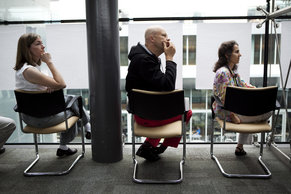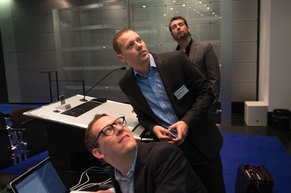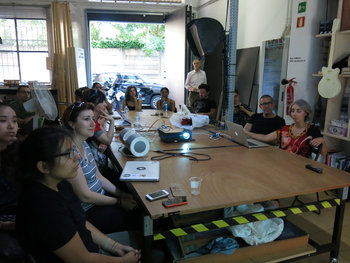
Resistance to Change
Change management is based on the observation that organizations tend to resist change such that a management team that issues a change strategy would be naive to think this strategy will be implemented without significant direction and control on their part.Voice
A primary reason that people resist change is that they don't feel consulted or that change is pushed at them. As such, a basic approach to change management is to involve stakeholders early in the strategy formation process to give them a voice.Message Framing
Change management requires communication designed to build support and understanding of a change. This resembles marketing whereby a change is sold. For example, a memorable catchphrase that helps everyone to understand the core benefit of an initiative.Anticipating Objections
Anticipating objections is the process of planning to handle likely criticism. This is important to change management as change is hardened with criticism as opposed to pushed out with one-way communication.Direction
Generally speaking, groups can't form a reasonable strategy without a leader who provides direction and vision. That is to say, that group decisions tend to reflect the social dynamics of the group as opposed to rational thought. A change manager is a leader who takes charge to provide strategic direction.Trust
Leaders must delegate responsibility to many people to achieve a large change. This can be described as a process of trust. Leaders essentially decide who to trust and communicate this trust by granting responsibilities, resources and authority.Control
Control is the process of monitoring and measuring things. People are trusted to achieve their responsibilities but this is also monitored and measured as part of change management.Visibility
Directly engaging people at every level of a change to understand it end-to-end. This is required to identify issues and agents of change.Issue Clearing
Change management quickly detects and clears issues. This requires much authority and/or influence such that change management is an executive function.Organizational Culture
A culture emerges within a firm with the shared experience of the organization. This is beyond the direct control of management such that influencing culture is a hard management problem. For example, an organization that has experienced painful failed projects may develop a culture of change fatigue whereby employees adopt a defeatist attitude towards aggressive new strategies.Agents of Change
In any change effort, people will emerge to push things forward. It is the job of the change manager to identify these agents of change and give them resources, authority and rewards.Sidelining
In any change effort, elements will emerge that try to derail change, slow things down or use the resources of change to pursue their own agenda. The change manager works to sideline these elements.Stakeholder Management
Managing communication to stakeholders and influencing them to clear issues. In some cases, major stakeholders must be sidelined. Again, change management requires significant influence, leadership prowess and authority.Scope Management
Change managers need not be project managers but they do need to understand project management issues such as scope management. For example, a change manager should be able to identify a project with runaway scope that is unlikely to be successful. In this case, the project is immediately restructured.Risk Management
Allow everyone to identify risks, record them in a risk register and look for opportunities to treat each risk.Change Management Plan
A change management plan maps out the activities of the change manger. This is mostly a communication plan that outlines how issues, risks and progress with be monitored, measured and communicated.Change Failure
Managing failures to recoup value, restructure things and move forward again. Identifying and managing failure is usually better than operating in a state of denial.Benefits Realization
Benefits realization is the process of owning a change until it produces business results. For example, a product manager who is both responsible for developing a new product and for its revenue upon launch. Separating implementation from benefits realization tends to be problematic.Last Responsible Moment
It is often a mistake to spend months planning a change with the expectation that it will be implemented as planned. Change often involves significant discovery such that it is often productive to change, learn and change again in quick cycles. This can be described as a last responsible moment approach.| Overview: Change Management Examples | ||
Type | ||
Definition | The practice of leading difficult change that faces risk and opposition. | |
Related Concepts | ||



































